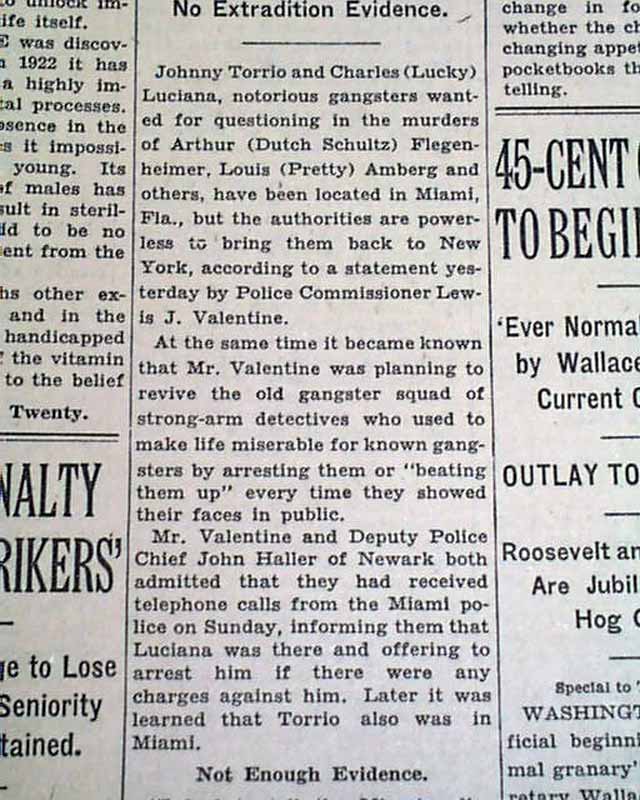Home >
After gangster's murder, New York City to end gang power...
After gangster's murder, New York City to end gang power...
Item # 721249
October 31, 1935
NEW YORK TIMES, October 31, 1935
* Post Dutch Schultz assassination
* New York City gangsters hunted
* Johnny Torrio & Lucky Luciano
The top of the front page has one column headings: "POLICE TO REVIVE GANGSTER SQUAD; TORRIO IS IN MIAMI" "Valentine to Restore System of Picking Up All Outlaws Who Appear in Public" "Luciana Also In South" and more (see images).
Complete with 42 pages, light toning at the margins, minor spine wear, generally in very nice condition.
AI notes: Dutch Schultz, born Arthur Flegenheimer, was a notorious New York mobster whose criminal empire included bootlegging and numbers rackets. In 1935, facing federal prosecution for tax evasion and fearing the growing influence of prosecutor Thomas E. Dewey, Schultz reportedly plotted to have Dewey assassinated, a move that alarmed the national organized crime syndicate (“the Commission”), who saw it as too risky. On the night of October 23, 1935, Schultz and three associates were ambushed at the Palace Chop House in Newark, New Jersey, by hitmen Charles “The Bug” Workman and Emanuel “Mendy” Weiss. Schultz suffered severe gunshot wounds to his chest and abdomen and lingered into the next day, giving delirious, often incoherent statements but never identifying his attackers. He died on October 24, 1935, from complications of his wounds. The subsequent investigation by local and federal authorities was hampered by Schultz’s inability to name the shooters, but later historical and criminal records attribute the hit to Workman and Weiss acting on the Commission’s orders. Schultz’s death led to the absorption of his criminal operations by rival mobsters like Lepke Buchalter and marked a turning point in organized-crime law enforcement, emboldening Thomas Dewey’s later successful prosecutions against gangsters.
Category: The 20th Century


















